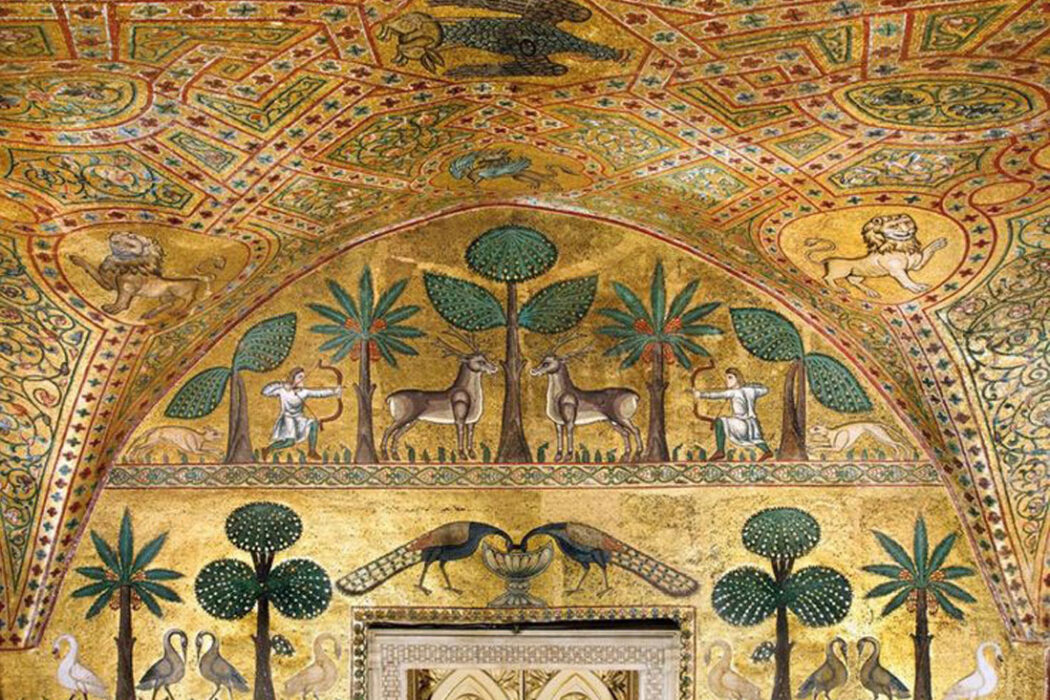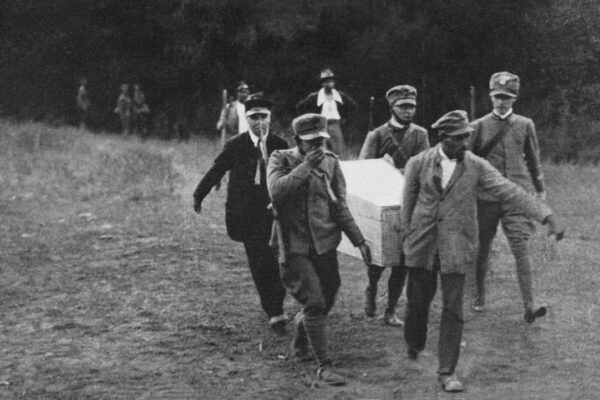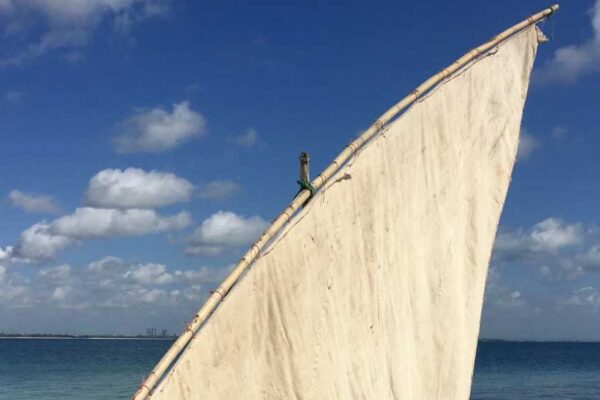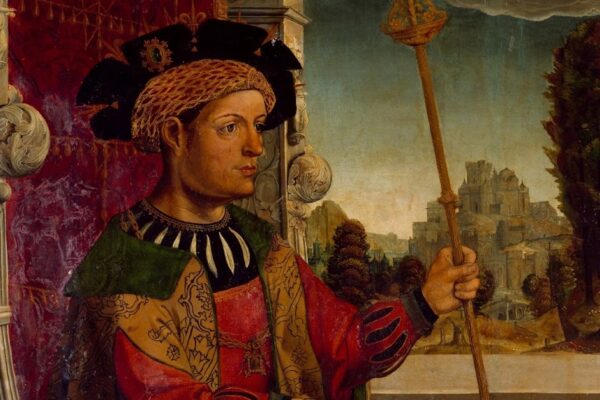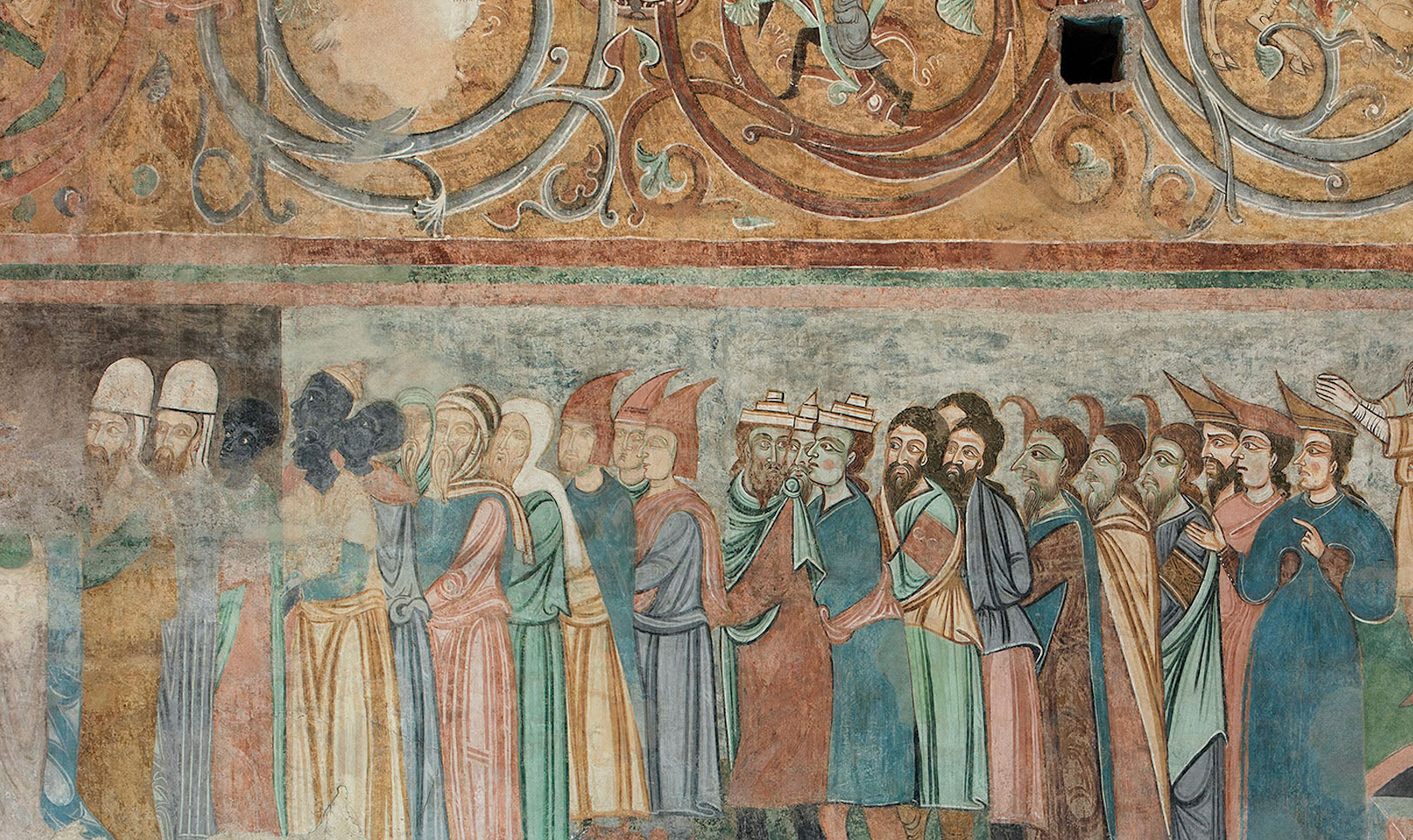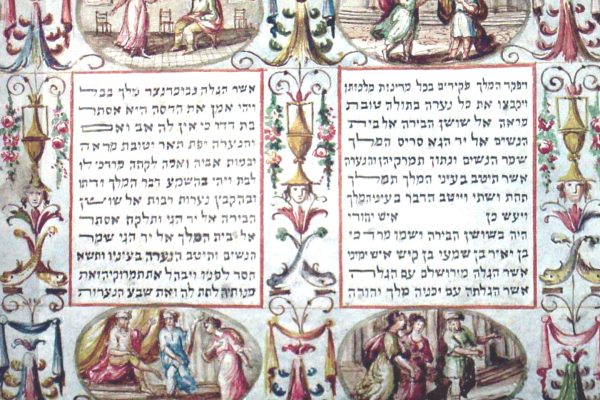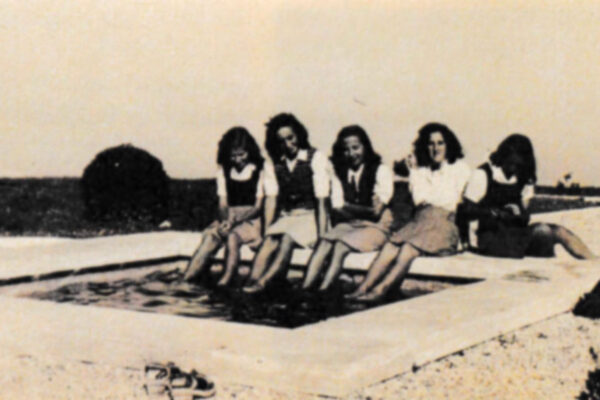This essay is published in: Jan M. Ziolkowski (ed.), Dante and Islam, Fordham University Press. A full annotated version of it can be accessed therough FUP or on Scribd.
David Abulafia’s special interests lie in maritime history, particularly the history of maritime trade; another strong interest is medieval and Renaissance Italy, examined from a southern perspective; his maritime interests also include early encounters between Europeans and native peoples in the Atlantic. His early publications concentrated on the medieval Mediterranean, and included The Two Italies (1977), which looked at the links between the Norman Kingdom of Sicily and the Italian maritime republics of Genoa, Venice and Pisa. His biography of Emperor Frederick II, published in 1988, challenged existing assumptions by portraying the emperor as a man of his time. He has also written about the economic and political role of the Catalans in the medieval Mediterranean (A Mediterranean Emporium, 1994; The Western Mediterranean Kingdoms, 1997).
More recently, he discussed European encounters with the inhabitants of the Canary Islands, the Caribbean and Brazil in The Discovery of Mankind (2008). Challenging the methodology of the great French historian Fernand Braudel, his history of the Mediterranean from Antiquity to the present, The Great Sea: a Human History of the Mediterranean (Penguin, 2011), won the British Academy Medal and has been translated into 12 languages, with more on the way. Its successor, The Boundless Sea: a Human History of the Oceans (Penguin, 2019) was awarded the Wolfson History Prize in 2020, and both these books have received the Mountbatten Literary Award of the Maritime Foundation. He is now at work on a smaller companion volume that will look at several seas, such as the Black Sea, that he has not examine closely in those two books.
Among his many articles, topics include the legal status of Jews and Muslims in medieval Sicily and Spain, a revisionist view of the reign of Ferdinand the Catholic, princely power in the Aragonese kingdom of Naples, and European reactions to the arrival of the Gypsies (Roma) in the 15th century.
He became a Fellow of Gonville and Caius College in 1974, was appointed to his first Faculty post in 1978, and was Professor of Mediterranean History, 2000-2017.
He is a Fellow of the British Academy and a Member of the Academia Europaea, visiting Professor at the College of Europe (Natolin campus) and visiting Beacon Professor at the newly-founded University of Gibraltar.
During Dante’s lifetime, the only Muslim city on the Italian peninsula ceased to exist.
Dante does not mention Lucera Saracenorum (a Latin placename meaning “Lucera of the Saracens”) in his writings, despite his references to the struggle between the Angevins and first the Hohenstaufen, then the Aragonese (for instance, in Purgatorio 6 and 7), or indeed his references to Muḥammad and to crusaders.
And yet during its brief history of less than eighty years, up to its conquest by Charles II in 1300, Lucera was a source of controversy and of fascination, the seat of Christian rulers who employed the inhabitants of the town as soldiers and craftsmen, taking particular advantage of their skill in the production of military equipment, including armaments and Its existence serves as a reminder that contact with Islam in Dante’s Italy did not consist solely in translation projects; in any case, the Angevin court mainly employed Jews, not Muslims, on these projects, as had Frederick II. Nor did it consist solely of commercial links through Genoa, Venice, and other ports. As soldiers in the armies of Frederick II (1194–1250), Manfred (ca. 1232–1266), and Charles I (1226–1285), the Muslims of Lucera aroused awe in lands where they served, which included northern Italy, Albania, and possibly the crusader states. They were a source of worry to the popes, partly because their establishment in Lucera had resulted in the displacement of the local Christians and partly because it was unsettling to see arms-bearing Muslims living no great distance from the papal state in the flat lands of Capitanata (the region around Foggia); indeed, they resisted the papal champion Charles I when he conquered the kingdom of Sicily in 1266, and they rebelled against him following the tragic attempt by Frederick’s grandson Conradin (1252–1268) to recover the throne of Sicily for the house of Hohenstaufen.
Yet they were permitted to continue to live in Lucera and were only arrested and deported in 1300, in circumstances that still arouse controversy among historians, for at that stage there is no evidence that they were actively opposing the Crown, nor did they possess any known links to the outside world that would have enabled their opponents to argue that they were the allies of hostile Muslim powers in North Africa or elsewhere (unlike the Muslims of Minorca and Valencia in the same period).
There was unease at the idea that they were a permanent element in the population of southern Italy. After founding the colony, Frederick II encouraged the Luceran Muslims to cultivate the soil around Lucera as part of a wider plan to bring back prosperity to the Capitanata. And some evidence suggests that, at least initially, attempts were made to convert the Lucerans to Christianity.
Frederick II established the Muslim colony at Lucera to solve the problem of continuing rebellion among the Muslims of Sicily. The rebellion had begun in the last years of the twelfth century: longstanding disaffection among the Sicilian Muslims turned into open revolt as rival claimants to the Sicilian throne—Norman, Sicilian, and German—competed for control of the kingdom of Sicily. One writer, the anonymous author of the letter to Peter, treasurer of the church of Palermo, lamented that the “Sicilians” were unable to work together against the common enemy from outside and looked to the Muslims of Sicily for cooperation, for, he said, if Christians and Saracens worked together under a king whom they all respected, the island could be saved from the insane fury of the Germans, rude foreigners from the north, with their grunting speech and bestial ways, who would rape the Sicilian women and cut down with the sword those who resisted them: “The madness of the Germans is not accustomed to being controlled by reason”.
Yet he was aware that the Muslims felt they had been persecuted long enough, and there was a danger that they would act independently, perhaps seizing strongholds in the mountains (as in fact happened) or along the coast.
It is already clear from the travel diary of the Granadan pilgrim ibn Jubayr, who visited Sicily in 1184–85, that the Muslim communities of Sicily were under increasing pressure from the Crown, while the hostility of Christian settlers from northern Italy had resulted in pogroms twenty years earlier. By granting extensive estates in western and southeastern Sicily to the abbey (later cathedral) of Monreale, King William II placed the greater part of the Muslim peasantry under ecclesiastical lordship, bringing to an end an era of relative autonomy in the Muslim villages of western Sicily. Rebellious Muslims sought to recover this autonomy, whose roots can be traced back to the surrender treaties made at the time of the Norman conquest in the late eleventh century.
Exploiting the disorder of Frederick II’s childhood, the Muslims created a statelet of their own at Entella and Jato, which even minted its own coins. Disorder spread to Girgenti (Agrigento), threatening the overseas grain trade that had long been a prime source of income for the Crown. Pope Innocent III inveighed against the Muslim rebels, seeing them as allies of the German warlord Markward of Anweiler, who for a time had the young Frederick of Hohenstaufen in his power. Innocent even threatened Markward with a crusade, on the grounds that he made use of Saracen military allies; his threats marked an important moment in the evolution of the “political crusades” launched against enemies of the Church within Western
Frederick II’s intentions in founding the colony at Lucera can be compared with those of the Iberian monarchs who, in the same period, were engaged in wars of conquest against the “Moors.” The crucial difference was that Frederick’s Muslims were seen as rebels, whereas those in Spain were treated in various ways according to whether they submitted peacefully or resisted. Majorca fell to James of Aragon in 1229, Minorca in 1231, and Valencia City in 1238; Córdoba and Seville were taken in 1236 and 1248, respectively, falling within the Castilian-Leonese sphere; and the Portuguese made significant advances in the Algarve as well. What was original about Lucera was that it did not simply involve the expulsion of the Muslims from the conquered lands, as happened in parts of Andalusia; the entire Muslim population of Sicily of between 15,000 and 30,000 people was uprooted and taken to a distant location, isolated from the Islamic world.
Thus this case falls halfway between the mass expulsions often carried out by the Castilians and the policy of retention of the Mudejar population characteristic of Aragon.
It is impossible to reconstruct the history of their transportation. That this was a complex exercise is obvious; much misery must have been involved. But the scale of the deportations should not be exaggerated. They were spread over many years, from 1223 onward, and as late as 1246 Frederick was still facing resistance in the Sicilian highlands. In 1241, 681 Muslim families apparently still lived on Malta, constituting the vast majority of the population, though they were in the minority on Gozo. Ibn Khaldūn reports that the Muslims of Malta were expelled in 1249—some historians argue for a later date—and they were mostly gone by Deportations were thus scattered and slow. The aim, certainly, was to reduce Sicily’s Muslim population as much as possible, though Sicily continued to host Muslim slaves as well as merchants and craftsmen who arrived from North Africa. Malta too served as a bridge to North Africa—it was through Malta that animals such as Barbary leopards were obtained for the royal menagerie.
Nor did the expulsion of the Muslims completely end the Arabized culture of Sicily. Sicilian Jews, whose fate was closely intertwined with that of the Muslims, continued to speak Arabic for at least another century and to write Arabic (in Hebrew characters) in Jewish documents up to the time of their own expulsion from Sicily in 1492–93. Frederick II and Charles I of Anjou turned to Jewish scholars for translations of works available in Arabic, whether they were texts by Averroës or medical tracts such as that presented by the Jewish Faraj of Girgenti to King Charles. Frederick also relied on the Jews as a source of technical know-how, inviting Jews from Garbum (either the Maghreb in general or the island of Jerba) to settle in Palermo in 1239–40 and to cultivate indigo, henna, and other plants that had largely disappeared following the loss of the Muslim population.
The presence of the Jews must be stressed for another reason: it was they who provided a model for the classification of first the Sicilian and then the Luceran Muslims as servi of the royal chamber—an important aspect of the Luceran community that merits further discussion.
Regardless of what it reveals about Frederick’s Muslim policy, the deportation fits into an ancient tradition of population transfers in the region.
Southern Italy was dotted with small communities of Greeks, Bulgars, and others whose origins lay in earlier deportations by the Byzantine rulers of Indeed, Frederick deported Christians as well as Muslims: the siege of Celano in 1223 was reportedly followed by the deportation of the inhabitants to Malta, which, as has been seen, was a center of Muslim settlement; Frederick clearly wished to dilute the Muslim presence there.
After the settlement of Muslims at Lucera, a small Christian community continued to exist, most probably in the suburbs. Bishops of Lucera continued to be invested, though it is unclear whether they were able to reside within the city; by 1300 the cathedral was in a bad state of repair, and the bells of the Luceran churches were deposited in the castle—evidently there was no longer any point in ringing them.
Yet Frederick’s intention was not to create a fossilized community of Sicilian Muslims at Lucera. He saw the isolation of the Saracens at Lucera as a means of assimilating them into the Christian world. Alone in media Christianorum planitie (“in the middle of Christian country”), the Luceran Muslims were expected to assimilate into Latin society. Keeping them together was not, perhaps, the obvious way to achieve assimilation. Yet many already understood Italian, and there is good evidence from the end of the thirteenth century that names of Christian or Romance origin such as Riccardus were used alongside Arabic names.
In 1233 Gregory IX solicited Frederick’s help in ensuring that the Dominicans be allowed to preach Christianity to the Frederick insisted that he too was keen to convert all the Saracens in Lucera; he assured the pope that many had already converted.
At a time when Gregory IX, Ramon de Penyafort (Raymond of Peñafort, d. 1275), and others were beginning to plan ambitious preaching campaigns against Jews and Muslims, based on the close study of Arabic and Hebrew in special language academies set up for training missionaries, this self-contained group of Muslims was an obvious first candidate for conversion. Ramón Llull, that great enthusiast for these methods, was in the kingdom of Sicily during 1294, planning a trip to Lucera; but there is no hard evidence that he actually reached the town or that he converted a single soul in Lucera (or anywhere else he
Frederick was still interested in converting the Luceran Muslims in 1236. He asserted (though this must have been an exaggeration) that one third of the population had already decided to become Christians, thereby rebutting accusations that he had shown little interest in converting them. Frederick claimed credit not merely for the deportations to Lucera; he also claimed credit for Christianizing western Sicily by strengthening Christian settlement there and by removing the Muslim menace from the island. Lucera has to be seen as part of a two-pronged policy intended to benefit the Christians.
The great majority of Lucerans certainly remained Muslims until 1300, though the strength of their commitment is unknown. Some evidence suggests that pigs were reared by Luceran Muslims, implying that they were eaten as well by some of the Saraceni.
Yet it has been reasonably suggested that they had their own madrasa for the teaching and study of Islam. No Arabic books survive from Lucera, however, and there is no evidence that it was a significant cultural center. Undoubtedly, as in Spain, these Muslims who fell under Christian rule became increasingly isolated from the religious and intellectual life of the Islamic world. The Spanish evidence shows that the leading families tended to migrate to North Africa, and the Mudejar communities even of regions such as Valencia, with a high concentration of Muslims, were shorn of their upper class, leaving communities without the leadership traditionally supplied by the imams and the Muslim nobility. As will be seen, a local Luceran elite did emerge, but there are no indications that it was particularly distinguished in descent; rather, its power stemmed from success in fighting, gaining lands, and building ties to the Crown. Yet Islamic learning must have persisted at least in the practice of law: the Luceran Saracens were guaranteed the right to operate their own law courts, in accordance with the general principle borrowed by the Norman conquerors from their Muslim predecessors that religious minorities should govern themselves according to their own code of laws.
This principle, to use the Arabic term, was borrowed and modified in Iberia as well in the same period.
The secret of Lucera’s success lay in its Frederick II was keen to promote agricultural production throughout the realm, partly in the hope of effecting a recovery from the fiscal chaos of his childhood; revenues from grain sales, especially from the sale of grain grown on royal estates, were a source of financial security for the Crown. The thirteenth century saw a general extension of large estates in Apulia, marked by the creation of the granges, or of productive land that were increasingly consolidated into contiguous holdings. Wheat and barley dominated agricultural production in the region, while sheep, goats, and pigs were also reared; the great age of sheep farming in Apulia began in the fifteenth century, under Alfonso V (the Magnanimous), but Frederick’s legislation, itself based on that of William II in the late twelfth century, makes plain the importance of cycles of transhumance well before the Aragonese period.
Most of the Muslims lived within the city, but some of the lands they cultivated were several miles outside of Lucera; the presence of resident Muslims, officially or otherwise, in the surrounding countryside is fairly well documented: there were Muslims at Stornara, twenty-seven miles (forty-four kilometers) southeast of Lucera, at Castelluccio, sixteen miles (twenty-six kilometers) southeast of Lucera, and at San Giacomo, less than four miles (six kilometers) from Some Muslims commuted from the town, walking or riding to their lands several miles from Lucera to cultivate the soil.
Skilled craftsmen in the town were given commissions by the Sicilian kings, and some at least of the male Lucerans became soldiers, serving as far away as northern Italy, Albania, and Tunis during the thirteenth As mentioned, the city was not a major cultural center, although the royal palace in Lucera was a favorite residence of Frederick II and his successors. Many of the Saracen dancers and trumpeters in the emperor’s service were probably Muslim slaves brought from overseas, not local Lucerans, even if they eventually settled in Lucera.
The continuing presence of the Muslims in southern Italy irritated rulers after Frederick. In 1258, when the English king Henry III (1207–1272) decided to accept a papal offer of the throne of Sicily on behalf of his second son Edmund, the presence of the Luceran Muslims was cited as good grounds for a crusade against King Manfred. After conquering the kingdom of Sicily, Charles I was uneasy about the Luceran Muslims. Yet neither their resistance to the conquering Angevin armies in 1266 nor their rebellion in favor of Conradin in 1268 led Charles to suppress the colony. His intention to do so at some stage in the future need not be doubted. Yet he was well aware of their usefulness as farmers, soldiers, and makers of military equipment, and he would have been aware too of how Iberian rulers preserved and benefited from the subject Muslim communities over whom they were acquiring dominion during Charles’s lifetime, a period when Christian power was greatly extended into southern Spain and Portugal. The clearest evidence that the Angevin kings sought to replace the Muslim farmers of Lucera with a Christian population can be found in Charles I’s attempts to encourage Provençal settlement in and around Lucera. Julie Taylor maintains that his original intention was to settle Lucera itself with these Provençaux, and that this policy motivated the construction of a fortress in the town. Charles’s first intention, then, seems to have been the creation of a Christian population in a walled-off area of Lucera as a counterbalance to the massive Muslim majority; his second aim was the replacement of the Saracens by Provençal Christians, but their numbers were insufficient, and they became diffused across the surrounding region of Capitanata. Franco-Provençal dialects have persisted in nearby villages, suggesting that the newcomers found rural locations less constricting and more amenable.
One of the most important and difficult questions to answer pertains to the legal status of the Luceran Muslims. The latest account of the community, by Taylor, offers plenty of detailed information about the Lucerans as craftsmen, farmers, and soldiers, but, unfortunately, adds nothing to our understanding of this fundamental question.
The deeper one looks at this issue, the clearer it becomes that Frederick II’s model was not that of subject Muslims in Spain but of his Jewish subjects in Germany. In 1236 he had issued a privilege in favor of the German Jews that brought them under his direct protection; in part he sought to ensure that it was the emperor, and not the Church, who would exercise financial and legal authority over the Jews, who, he was aware, needed protection at a time of blood libels and other attacks. Frederick described the German Jews as servi camere a term indicating direct dependence on the emperor; the word servus did not, in this context, indicate a state of abjection but merely that the Jews were the king’s dependents and, in some measure, his agents or ministers.
Similar terminology was also applied to the Jews in Spain, starting in the statutes of the Aragonese city of Teruel (1176) and the Castilian city of Cuenca (1190).
It is clear that the concept of Jewish servitude was closely linked to the observation of St. Augustine that the Jews were destined to serve the Christians, preserving the books of the Old Law just as a servus would carry the books of his master. Additionally, the Theodosian and Justinianic law codes insisted in a similar spirit that Jews must not exercise dominion over Christians but must always be subordinate to them. These theological and legal verdicts on Jewish status helped determine the status of Muslims under Christian rule as well.
The first evidence that this terminology was being applied to non-Christians in Sicily occurs in a privilege issued by Frederick II at Brescia, in northern Italy, in November 1237, in which Frederick exempts a Jewish doctor called magister (“Master”) Busach, described as iudeus medicus, servus camere nostre from taxes customarily paid by the Jews of Palermo then and in the future. General tax exemption would no doubt have been quite valuable to a physician, who would have needed to import high quality ingredients from abroad, such as the sugar Frederick is known to have enjoyed. A reference in this document to the servicia rendered to Frederick by Busach is a reminder that Busach ministered to his king; servicia is a neutral term that could apply to anyone who wins the ruler’s favor by helping him: this man is no slave or serf. Later, the term servicia is used in the same document to mean taxes, imposts, and other obligations to the Crown, just as it might be used to describe the dues owed by a land tenant or by Christian citizens of any town.
This was a privilege in favor of a single person. We cannot show that Frederick II employed the term servi camere nostre for all his Jewish subjects in southern Italy and Sicily, in the way that he certainly did in Germany. However, it is clear that he did think of the Jews of the kingdom in similar terms to those of Germany since there was a long tradition in southern Italy of treating the Jews as financial assets of their Norman rulers, granted collectively to cooperative bishops or other beneficiaries.
The papacy complained in August 1236 that Frederick had stamped on the rights of the Church in Sicily, and one issue concerned “the Jewries seized from certain churches” (“de Iudecis ablatis quibusdam ecclesiis). To this complaint Frederick replied significantly that:
We did not take the Jews, who are immediately subject to us both in the empire and the kingdom according to a similar law, from any church that might assume a special right over them.
It is thus abundantly clear that Frederick wished to treat all Jews, whether in Germany or Sicily, as existing in a state of “immediacy,” directly linked to the Crown without intermediaries, unless he himself chose to make an exception.
The first evidence for a Sicilian Muslim being classified in the same way as a Jew comes from the register of Frederick II of 1239–40, where a figure called ‘Abd Allah or Abdolla appears as the servus of the camera:
By the mandate of Lord John the Moor, John of Otranto wrote to Alexander son of Henry, to the effect that at the request of Master Joachim he should provide expenses for Abdolla, servus of the Camera, who is being sent to learn how to read and write Arabic letters, since he will be traveling to him, and will stay with him.
Thus Abdolla was sent to study under an otherwise unknown Master Joachim, apparently a Greek or a Latin. Here, as in the case of Master Busach, it appears that the term servus is applied to a specific individual. The idea of needing to train someone to read and write Arabic should come as no great surprise: the Muslims of Sicily had nearly all been deported to Lucera by this point. Although Sicilian Jews continued to speak Arabic, Jews normally wrote Arabic in Hebrew characters; it must have made sense to train individuals in the use of Arabic script. It is even possible that Frederick wanted to train someone to read advanced scientific or philosophical texts in Arabic. Frederick’s instructions concerning Abdolla were sent to John the Moor, described by the chronicler Nicholas de Jamsilla as “quidam servus niger de domo Imperatoris” (“a certain black servus of the Emperor’s household”) who had been born into servitude (“ancilla natum”). Here we seem to encounter a slave, the son of a slave—the classic figure present at many another Mediterranean and oriental courts—who later became qa’īd of the Muslims of Lucera.
It is possible that Abdolla was also a Muslim court slave; and Jeremy Johns has actually rendered servo camere as “a slave of the Chamber” without explaining the intended meaning. Yet the term servus camere seems to be used by Frederick in a Sicilian (but not a German) context to indicate Jews and Muslims personally close to him, members of his intimate entourage, who might be slave or free. We can contrast this status with the position of the Muslims possessed by the royal court who still lived in Malta, where they were liable for a series of taxes and corvées; the villani curie paid the Crown 3,100 tarí (over 33 ounces of gold) each year in the 1240s. They lived alongside Maltese Jews, who were also evidently regarded as dependents of the Crown and who paid a or poll-tax, based on Islamic models. Most of the Maltese Muslims were apparently deported to Lucera, although many may have converted and remained as villani curie (helping to explain the survival of Siculo-Arabic as the Maltese vernacular). Slaves were a separate phenomenon on Malta. The slave population included captives from the islands of Jerba, raided by Frederick II a few years earlier: sixty servi and ancille working in the three royal castles (Mdina, Birgu, Gozo) appear to have been slaves.
To take a specific but unusual example, a Maltese slave was sold by a Florentine merchant in Genoa in 1248; her name was Maimona and, exceptionally, she indicated her consent to the sale—an odd and inexplicable set of circumstances.
However, the servientes who formed the island garrison should not be confused with slaves or servants; these were soldiers—“sergeants”—who were presumably free men from Sicily and southern Italy.
Servitude thus took many forms, and what we need to discover is the meaning of the term servus when applied to the Luceran Saracens in particular. The starting point is the entourage of Frederick II. In what senses were the apparent slave Abdolla and the physician Busach of similar status? Both Busach the Jew and Abdolla the Saracen were servi of the ruler’s chamber; Abdolla may also have been a slave in the sense of having been bought as a slave or of being the son of a slave, but the term servus camere itself did not convey that meaning. A servus Jewish or Muslim, who was present at court had a special bond to the ruler, a status not as grand as that of the familiares regis of the Norman period but nevertheless one that allowed these people to enjoy exceptional closeness to the ruler. The concept was applied to communities too: the Jews and Muslims were available to provide the king with services (including direct taxes); they had a direct, immediate, almost personal bond to the ruler.
The difficulty in accommodating Muslims in Christian society was met in Sicily and Iberia by approximating their status to that of Jews, even if Muslims did not carry the theological baggage that was heaped on the shoulders of the Jews. It was a neat and simple solution that came to define the status of the Muslims in southern Italy until their mass arrest in 1300 and even beyond. Under Charles I and Charles II, even the leaders of the Luceran community, such as ‘Abd al-‘Azīz (Adelasisius), were servi camere this did not prevent them from being knighted or from attending the king’s parliaments. The term was applied both to all Luceran Muslims (“universis hominibus Lucerie Sarracenis Camere Sue servis”) and to many individuals, such as Adelasisius, “sarracenus, milex, camere nostre fidelis et servus.”
In an earlier article, I argued that their fragile status as the king’s servi could, by 1300, be exploited with the help of the civil lawyers to justify the sale of virtually the entire population of Lucera as slaves and the dispersal of the Muslim colony at Lucera.
The term servus was itself ambiguous, applied to people as diverse as the pope and real slaves; but, armed with their knowledge of the Roman law of slavery, Charles’s advisers, such as his minister Bartolomeo da Capua, decided to read servi camere nostre as a statement that the Lucera Saracens were fully possessed by the king—they were slaves of the royal chamber. After 1300 a specific Latin term for slaves was also applied to former Lucera Muslims, who appeared in the marketplaces of the Mediterranean or occasionally lingered on estates in Apulia: by 1309 we read of “duos sclavos de servis olim Lucerie” (“two slaves from among the servi formerly of Lucera. The term sclavi had occasionally been applied in the past to Lucerans who were full slaves. From a group possessed, in a certain sense, by the Crown, the Lucerans became individuals possessed by those who could pay the state for them. In effect, King Charles II had decided that the Muslims of Lucera, as his property, would be sold to private buyers to raise cash and to extirpate the extraordinary, and to him highly offensive, Islamic city in his domains.
Some comparisons can be made. Thirteen years before the Lucerans were sold as slaves, the king of Aragon, Alfonso III, sold into slavery virtually the entire population of Minorca (perhaps 40,000 people), which had submitted to the king of Aragon under the highly advantageous terms of a surrender treaty in 1231. Between 1231 and 1287 the Minorcans led what was to all intents and purposes an autonomous existence as free Muslims within the Catalan-Aragonese kingdom of Majorca; they could even ban Christians and Jews from settling in their midst. But in 1287 they were classed as rebels because they were said to have collaborated with North African emirs to frustrate Aragonese enterprises in the Maghreb. Thus the complete depopulation of a Muslim territory had precedents; and there were also clearances in Andalusia following the fall of Córdoba and Seville in 1236 and 1248. However, the Minorcans were enslaved as punishment, whereas the Lucerans were already identified as servi and the term was given its most stringent meaning; therefore, they were not sold into slavery but sold as existing slaves to new masters. Still, it is very probable that Minorca provided an example of how to treat, or rather mistreat, a subject Muslim population by selling them en masse.
The extinction of Muslim Lucera should also be understood alongside Charles II’s vigorously anti-Jewish policy, beginning with the expulsion of the Jews from Anjou and Maine in 1289 (amid lurid accounts of Jewish usury and the seduction of Christian maidens), followed by an intense persecution of the south Italian Jews in about 1290. The aim in the latter case was the conversion of the Jews, who were accused of putting a Christian boy to death in mockery of Christ’s Passion. Eight thousand Jews are said to have converted; the rest are said to have fled from southern Italy. One of those involved in this policy was the eminent Crown lawyer and minister Bartolomeo da Capua, who was also heavily involved in the suppression of the Muslim colony at Lucera. That there was a strong religious component to the decision to end the Muslim community at Lucera is clear from the pronouncements of Charles II. Among the documents collected by Pietro Egidi in his Codice diplomatico dei saraceni di Lucera (Documentary Collection Concerning the Muslims of Lucera) are letters from Charles II in which he insists that his intention in suppressing the colony has been to increase the Christian faith. Indeed, he states that he has decided to dedicate the new, Christian city to the Virgin Mary (renaming it Città Santa Maria), considering it for “the common good, the safety of the province, and the advantage of his subjects” that the seed of Belial should be uprooted and wiped out in Capitanata, for the Saracens had committed “many horrendous and detestable things inimical to the Christian name.” While the accusation of (unspecified) horrendous acts bears comparison with the abuse directed against the Jews and Judaism, the exclusion of the Saracens from the wider community of regnicoli is made clear in the king’s insistence that they are being suppressed for the general good of his subjects.
The sale of the Lucerans into slavery also brought Charles II much-needed funds at a critical time in his struggle against the Aragonese for control of Sicily, and much of the grain of Lucera was sent in 1300 to feed the Angevin armies. The immediate result of the depopulation of Lucera was a collapse in revenues from the region as agricultural productivity collapsed. Indeed, in 1302 special permission was granted for small groups of Muslims (some interestingly described as liberi, others as servi) to remain in Capitanata, without explicitly insisting that they convert to Christianity, though they were denied the right to a mosque or to form a religious congregation. In 1301, five and a half months after the arrest of all the Luceran Muslims, deported males were sold for two ounces of gold (craftsmen for three), women and children for one ounce; there was apparently no further attempt to distinguish among slaves by physique, health, or age, though attractive young females would attract better prices on the international markets than older ones. Merchants could recoup the cost of a young woman by putting her to work as a sex slave: it is unlikely that much pity was shown for the misery of the Lucerans. Maybe prices had been higher immediately after the sale of the Lucerans began, but it needs to be stressed that these prices were far below those being paid in the same period at Palermo, where a black “Saracen” slave named Miriam was sold in 1287 for five ounces and twenty-two and one half tarí, and a white Saracen slave was sold for five ounces; the Maltese slave Maimona, sold in Genoa in 1248, fetched five and a half librae of silver, which (depending on exchange rates) was only about an ounce and a half, according to Peter Spufford’s tables of exchange rates. However, around 1287 four or five ounces seems to have been the standard price at least in Palermo, though later in the year, as Minorcan slaves flooded the market, the price plummeted. Many a merchant must have bought Luceran slaves with a view to selling them on to purchasers overseas, at a handsome profit.
Assuming that 10,000 Luceran slaves were sold and that one third were male, one third female, and one third children, we can assume a total value of about 15,000 ounces of gold (taking into account the extra fee for artisans). Then there was the property of the Lucerans: considerable attention was paid to the disposal of cattle owned by the Muslims, while the wealthy Luceran Abd al-‘Azīz (Adelasisius) suffered the loss of precious items such as robes and articles made of silver—these were returned to him after he converted to Christianity, but only after some effort.
With allowance for overheads—the Muslims had to be fed as they were sent to points of sale in Naples and Apulia—and after commission from merchants who presumably helped the royal agents dispose of these living goods, not to mention endemic corruption, the king would have been lucky to receive 10,000 ounces. Still, that was a massive injection of funds, 333 pounds of gold, and yet it served little purpose, since within two years even Charles’s supporter Pope Boniface (who had praised the suppression of Lucera) had to admit that the time had come for peace with the Aragonese, which was secured with the Treaty of Caltabellotta.
Ultimately, both Jews and Muslims were victims not so much of Angevin failure in the War of the Sicilian Vespers as of Angevin failure to come to the aid of the beleaguered Latin Kingdom of Jerusalem, which had fallen to the Mamluks in 1291 while Charles II was preoccupied with Sicilian affairs. After his father bought the Crown of Jerusalem from Maria of Antioch in 1277, the Angevin kings of Naples called themselves Rex Jerusalem et Sicilie (“King of Jerusalem and Sicily”), even though they lost the latter in 1282 (and the former nine years later). The escutcheon of the kings of Naples proudly bore the gold cross on a white field of Jerusalem. Charles II fondly produced plans for a great crusade that would recover Latin power in the Holy Land, and all the evidence suggests that he saw himself as an athleta Christi (“athlete of Christ”) charged with the moral and military defense of Christendom against Muslims and Jews. It is perhaps no surprise that, in search of an easy victory against Islam, he turned against the Muslim farmers and craftsmen of his own kingdom, impotent as he was in the face of Mamluk power.
Image: Palatina Chapel, Palermo, Sicily


